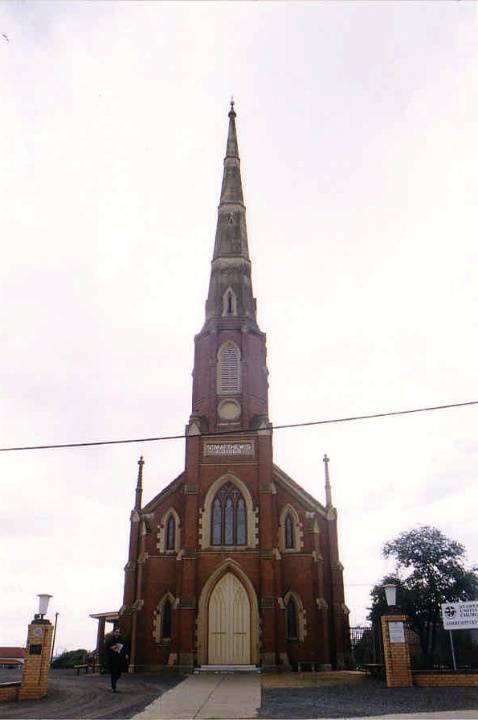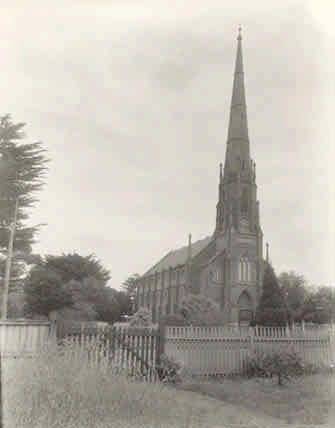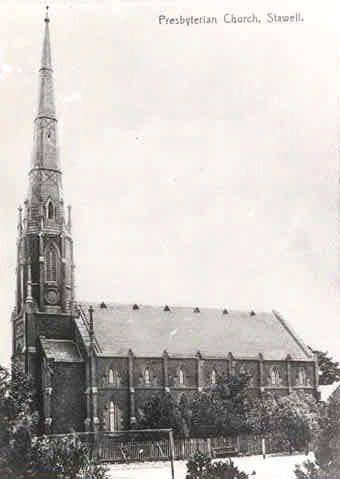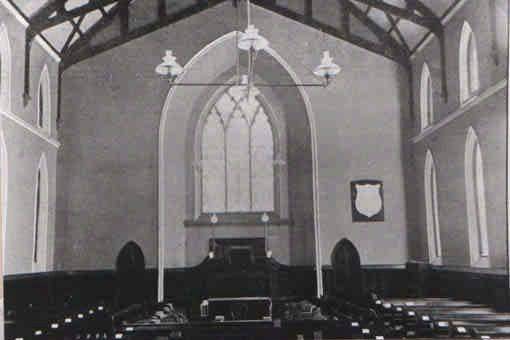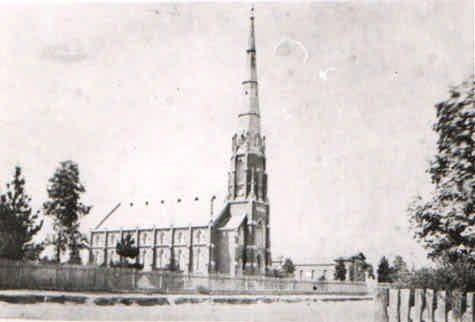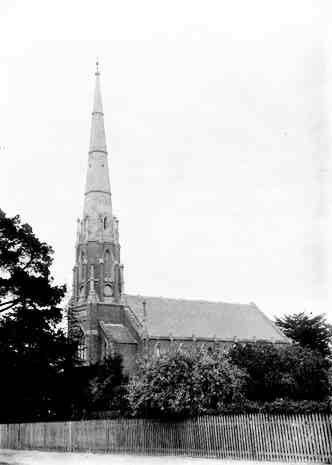| Back to search results » | Back to search page » |
|
St. Matthews Uniting Church, 9-13 Scallan Street, STAWELL
Location11-13 SCALLAN STREET STAWELL, NORTHERN GRAMPIANS SHIRE LevelIncluded in Heritage Overlay |
|
Statement of Significance
What is significant?
How is it significant?
Why is it significant?
St. Matthew's Uniting Church, 9-13 Scallan Street, Stawell, makes a highly significant contribution to the visual and architectural amenity of the local area. The Victorian Free Decorated Gothic styled Church building was constructed in 1868 to a design by Robert Alexander Love, architect of Pleasant Creek and Sandhurst. Apart from the rear Community Centre addition, the building is externally largely intact, and is identified by its landmark tower and spire, stained glass window by Messrs Fergusson, Urie and Co. of Melbourne, distinctive pipe organ by J.E. Dodd of Adelaide, and many other original features.
St. Matthew's Uniting Church is architecturally and aesthetically significant at a STATE level. It demonstrates many original qualities of a Free Decorated Gothic style. These qualities include the unpainted locally-made brick wall construction, granite base, Portland cement dressings and particularly the parapeted steeply pitched gable roof form and the imposing centrally placed octagonal tower and spire. Other intact qualities include the slate roof cladding, ventilation dormers in the tower and spire and along the gable ridgeline, pointed double timber doors with incised decorative Gothic relief, Free Decorated tracery window adorned with leadlighting, memorial tablet with the inscription "St. Matthew's A.D. 1868", blind oculi in tower, pointed ventilator, lancet windows, projecting brick buttresses, pointed windows, with smaller pointed clerestorey windows in the upper reaches of the walls. (all containing diamond lights and variously coloured borders), rectangular apse, decorative features (drip moulds and quoinwork about the window and door openings, projecting buttress pediments, copings, bosses and the circular turrets that crown the recessed buttresses on the main facade). The interior of the building also contributes to the architectural and aesthetic significance of the place. The significant internal features include the open timber scissor roof trusses, plastered imitation stonework wall finish, timber wainscot dados surmounted by Gothic mouldings, timber screen, stained glass war memorial window by Messrs Brooks, Robinson and Co. of Melbourne, pipe organ by J.E. Dodd of Adelaide, pointed stained glass window by Messrs Fergusson, Urie and Co. of Melbourne, timber choir stalls and a central timber platform pulpit decorated with Gothic panel enrichments and the Kauri timber seating.
St. Matthew's Uniting Church is historically significant at a LOCAL level. It is associated with the development of the Presbyterian Church in Stawell, particularly from 1868. The Church also has associations with Robert Alexander Love, architect of Bendigo and temporarily of Pleasant Creek, together with Thomas Moriarty (bricklayer and stonemason), R.M. Hassell (carpenter), and H. Williams (plasterer and slater).
St. Matthew's Uniting Church is scientifically significant at a STATE level. The original pipe organ by J.E. Dodd of Adelaide, stained glass war memorial window by Brooks, Robinson and Co. of Melbourne, and the stained glass window by Messrs Fergusson, Urie and Co. of Melbourne illustrate rare and intact artistic displays and technology.
St. Matthew's Uniting Church is socially significant at a LOCAL level. It is recognised and valued by the Stawell community for religious reasons.
Overall, St. Matthew's Uniting Church is of STATE significance.
Group
Religion
Category
Church


